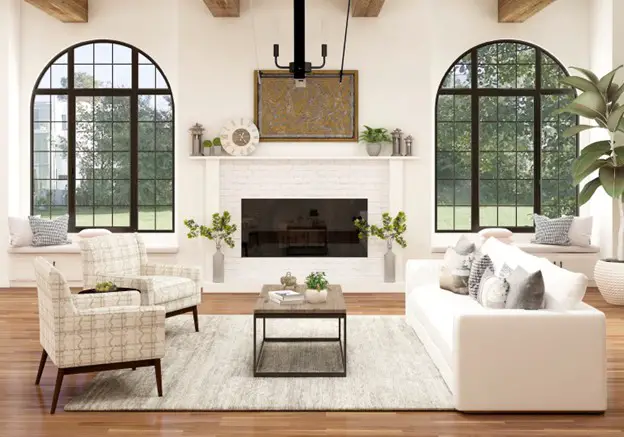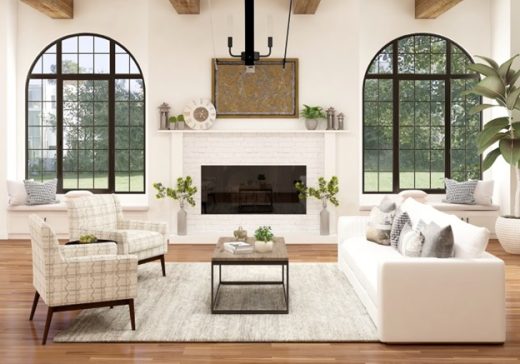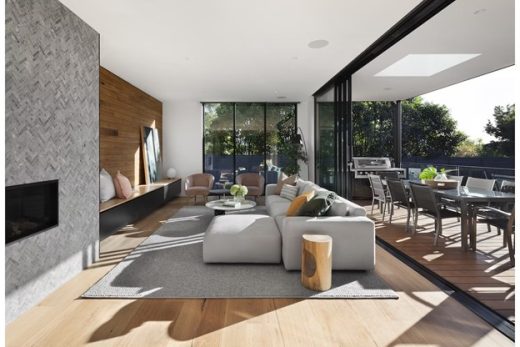How window shapes and sizes define home architecture, Property exterior guide, Real estate glazing tips
How Window Shapes and Sizes Define Home Architecture
8 Aug 2023
In the realm of home architecture, one element often overlooked in its significance is the window. These humble apertures wield immense power in shaping a home’s character, as they not only provide light and ventilation but also embody the essence of the structure’s design. Window shapes and sizes have evolved over the course of history, influenced by cultural, technological, and artistic factors.
In this extensive blog post, we embark on a captivating exploration of the profound significance of window design in home architecture. By delving into how different styles contribute to the overall charm, functionality, and ambiance of living space, we gain a deeper understanding of the importance of this often-underestimated aspect of architectural expression.
The Historical Evolution of Window Shapes and Sizes
Venturing into the annals of architectural history unveils an intriguing evolution of window design, which echoes the cultural tapestry and artistic prowess of each era. In the antiquity of ancient civilizations, windows served the practical purpose of providing ventilation while offering a glimpse of the outside world, all the while safeguarding inhabitants from external threats. As societies progressed, window styles evolved, with the Renaissance period heralding an era of larger, more intricate windows that adorned palaces and grand estates. These magnificent windows exuded an air of grandeur, bridging the gap between the interior and the external world in an awe-inspiring display of artistic prowess.
The captivating Gothic architecture of medieval times embraced tall, slender windows with pointed arches, captivating the imagination and invoking an ethereal atmosphere within the sacred precincts of religious buildings. Subsequently, the Renaissance architectural movement favored square-headed windows with divided panes, striking a harmonious balance between aesthetic allure and functional efficiency.
The Cultural Influence on Window Designs
Cultural diversity has left an indelible imprint on window shapes and sizes across various regions and societies. As each civilization brings its unique values and artistic sensibilities to architectural expression, the result is an exquisite array of window designs that serve as a testament to the rich tapestry of human culture.
In the timeless charm of traditional Japanese homes, shoji screens, fashioned from paper-thin material, serve as windows that diffuse light, creating an ambiance of serenity and tranquility, fostering a meditative living environment. Similarly, Indian architecture boasts the intricate allure of jharokha windows, intricately carved and artistically crafted, exemplifying the seamless integration of art and function. In Western cultures, the Colonial style embraces double-hung windows adorned with symmetrically arranged grids, exuding a sense of order and balance that resonates with refined elegance.
In stark contrast, the modernist movement celebrates the use of large, expansive windows, seamlessly merging the indoor and outdoor realms, fostering a sense of openness and unification with nature.
The Impact on Energy Efficiency
The interplay between window design and energy efficiency is of paramount importance in the quest for a sustainable living environment. Opting for well-insulated windows, such as those with double or triple glazing, not only reduces heat loss during colder months but also enhances temperature regulation, keeping the interior cool and comfortable during warmer seasons. The investment in energy-efficient windows yields long-term cost savings on utility bills and stands as a testament to the homeowner’s commitment to environmental responsibility.
In Phoenix, Arizona, for instance, windows play an essential role in regulating indoor temperature, as well as protecting inhabitants from the scorching heat of summer months. Double-glazed windows with tinted glass offer optimal insulation and a barrier against intense solar radiation, allowing you to enjoy the warmth of the sun without compromising on comfort or energy savings. It is however crucial to find a professional company offering home window replacement in Phoenix for quality assurance and best results. Look for companies that use state-of-the-art technology and highest grade materials to ensure durability, energy efficiency, and optimal performance.
Architectural Styles and Window Designs
Architectural styles from various epochs and regions have given birth to iconic window designs that define the very essence of a home’s character. The Tudor style, celebrated for its charming casement windows adorned with diamond-shaped grids, evokes a timeless old-world charm that transports one to the realms of fairy tales and medieval romance. On the other hand, Spanish Colonial homes boast the allure of arched windows, complemented by intricately wrought-iron grilles that embrace the vibrant essence of Mediterranean living.
In contemporary architecture, sleek and minimalist lines call for the incorporation of floor-to-ceiling windows, creating an illusion of boundless space and harmoniously integrating the natural surroundings into the interior design. This fusion of the modern and the organic provides a sense of serenity and harmony, elevating the living experience to new heights.
Window Sizes and Natural Light
The size of windows exerts a profound influence on the amount of natural light that graces a living space. In regions where daylight is scarce, incorporating larger windows or strategically placed skylights can serve as a beacon, infusing brightness into the home and creating a warm and inviting ambiance. The embrace of abundant natural light not only enhances the living experience but also aligns with eco-conscious principles, reducing the need for artificial lighting and contributing to a sustainable living environment.
Conversely, in sun-drenched locales, smaller yet well-positioned windows offer a practical solution to reduce solar heat gain, maintaining a comfortable indoor temperature and serving as a refreshing respite from the scorching rays of the sun.
Aesthetics and Visual Appeal
Beyond their utilitarian purposes, window shapes and sizes significantly contribute to a home’s overall aesthetic appeal, adding an artistic dimension to the architectural canvas. The inclusion of arched windows infuses a touch of sophistication and elegance, evoking the timeless allure of ancient European architecture. On the other hand, floor-to-ceiling windows beckon the natural world into the home, facilitating an uninterrupted visual connection with the surrounding landscape, while simultaneously creating an illusion of boundless space within.
Geometric patterns and grids in window design offer homeowners an opportunity to infuse their living spaces with a personalized touch of character and artistic expression. These unique designs set homes apart, transforming them into a visual masterpiece that reflects the individuality and taste of their occupants.
In conclusion, window shapes and sizes are indispensable elements that define the architectural identity of a home. The captivating historical evolution of windows narrates an epic tale of artistic ingenuity, cultural influence, and technological progress that continues to shape contemporary architectural practices. Each era’s distinctive window styles offer a glimpse into the aesthetics and sensibilities of its time, reflecting the human quest for beauty and functionality.
Cultural diversity imparts a wealth of window designs that echo the essence of different societies, connecting past, present, and future in an intricate dance of architectural expression. From the harmonious symmetries of Western Colonial homes to the organic fusion of contemporary architecture with nature, each style represents a unique artistic expression that resonates with individual preferences and lifestyles.
The impact of window sizes on natural light, energy efficiency, and visual appeal is undeniable. Careful consideration of window design transforms a living space into a harmonious blend of form and function, elevating the quality of life for its occupants. As one gazes out of a window, appreciating the craftsmanship and artistry that have shaped its architectural legacy, one is reminded of the interplay between the external and internal worlds, and how windows continue to bridge the gap between them, bringing light, beauty, and inspiration into the heart of our homes.
Comments on this How Window Shapes and Sizes Define Home Architecture article are welcome.
House Windows
Property Windows Posts
Buying new window treatments for your home
5 creative uses of glass in architecture
7 reasons why you should replace your old glass windows
Architecture Designs
Home Designs
Building Articles
Comments / photos for the How Window Shapes and Sizes Define Home Architecture page welcome







